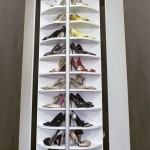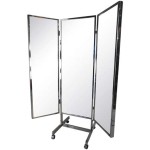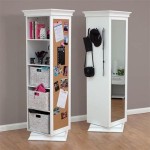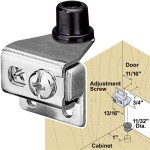How To Age Mirror Glass: Achieving an Antique Aesthetic
Creating an aged effect on mirror glass is a popular technique for enhancing interior design, crafting unique art pieces, or restoring antique furniture. By replicating the natural deterioration that occurs over time, a modern mirror can acquire the character and visual appeal of a vintage piece. This process involves manipulating the reflective silvering on the back of the mirror, along with the glass itself, to simulate wear and tear.
The techniques for aging mirror glass range from simple DIY methods to more controlled and professional approaches. The ultimate choice depends on the desired level of aging, the size and type of the mirror, and the available resources. Regardless of the method chosen, safety precautions are paramount, especially when working with potentially hazardous chemicals and tools.
Understanding the Components of a Mirror
Before attempting to age a mirror, it is crucial to understand its construction. A standard mirror consists of a sheet of glass, a thin layer of silvering (typically metallic silver), a protective coating over the silvering (often copper), and a final layer of paint to seal and protect the entire backing. The silvering is what provides the reflective surface. The protective layers prevent the silvering from oxidizing and deteriorating too quickly.
The aging process primarily targets the silvering and its protective layers. By selectively removing portions of these layers, a mottled and distressed appearance is created. This allows the underlying glass to show through, producing darker areas that contrast with the remaining reflective surface, mimicking the look of an old, tarnished mirror.
Different types of mirrors may have variations in their construction. Some older mirrors may utilize mercury amalgam instead of silver. Newer mirrors may utilize different protective coatings or paints. These variations can affect the outcome of the aging process and may require adjustments to the techniques employed.
Methods for Aging Mirror Glass
Several methods can be employed to age mirror glass, each with its own advantages and disadvantages. These methods vary in complexity, cost, and the level of control they offer over the final aesthetic.
Chemical Etching: This method involves using chemicals to selectively remove the protective layers and the silvering from the back of the mirror. Hydrochloric acid (muriatic acid) is a common choice, diluted to a safe concentration. The acid reacts with the metal layers, causing them to dissolve. The process can be controlled by carefully applying the acid with a brush or sponge, and by monitoring the reaction time.
Before applying any chemical, testing on a small, inconspicuous area of the mirror is essential. This allows for determining the appropriate dilution and reaction time needed to achieve the desired effect without damaging the glass or causing unwanted side effects. Safety precautions, including wearing gloves, eye protection, and working in a well-ventilated area, are critical when handling hydrochloric acid.
Mechanical Abrasion: This method involves physically removing the protective layers and silvering using abrasive tools. Sandpaper, steel wool, or even a rotary tool with an abrasive attachment can be used. This technique allows for more localized and controlled removal of the backing, enabling the creation of specific patterns or designs.
The key to successful mechanical abrasion is to apply gentle pressure and avoid scratching the glass itself. Starting with a fine-grit abrasive and gradually increasing the grit as needed is recommended. Regular cleaning of the abraded area is also important to assess the progress and avoid overdoing it.
Painting Techniques: This method focuses on creating the illusion of aging by applying paint and other finishes to the back of the mirror. This is a less destructive approach compared to chemical etching or mechanical abrasion, as it doesn't involve removing the original silvering.
One common technique involves applying a dark-colored paint, such as black or brown, to the back of the mirror in random patterns. Once the paint is dry, a small amount of silver or gold paint can be stippled over the dark paint to create a subtle metallic sheen. Another technique involves using crackle medium, which creates a network of cracks when dry, simulating the appearance of aged and cracked silvering.
Combination Methods: Combining different techniques can often yield the most realistic and nuanced results. For example, chemical etching can be used to remove large areas of silvering, followed by mechanical abrasion to refine the edges and create finer details. Painting techniques can then be applied to add depth and complexity to the aged appearance.
Key Considerations for Successful Aging
Achieving a convincing aged effect on mirror glass requires careful planning, attention to detail, and a willingness to experiment. Several key considerations can significantly impact the success of the project.
Surface Preparation: Proper preparation of the mirror's surface is crucial for achieving optimal results. The back of the mirror should be clean and free of any dirt, grease, or loose debris. Wiping the surface with a mild detergent and water, followed by a thorough drying, is recommended. If the existing paint on the back of the mirror is peeling or damaged, it should be removed before proceeding with the aging process.
Pattern and Design: The pattern and design of the aging effect should be carefully considered. Random, organic patterns tend to look more natural and authentic than symmetrical or overly uniform designs. Inspiration can be drawn from antique mirrors, photographs of aged glass, or even natural patterns found in textures like wood grain or stone.
Safety Precautions: Safety should always be the top priority when working with chemicals, tools, or sharp objects. Wearing appropriate personal protective equipment (PPE), such as gloves, eye protection, and a respirator, is essential. Working in a well-ventilated area can help minimize exposure to hazardous fumes. Following the manufacturer's instructions and safety guidelines for all materials and equipment is also crucial. Proper disposal of any waste materials, especially chemicals, is equally important.
Achieving the Desired Aesthetics The aging process is often a matter of experimentation. It can be helpful to practice on a scrap piece of mirror glass before working on the final piece. This allows for testing different techniques, dilutions, and application methods to achieve the desired aesthetic. Documenting the process, including the materials used, the techniques employed, and the results obtained, can be valuable for future projects.
When using chemical etching, the dilution of the acid and the reaction time are critical factors. Too strong of a concentration or too long of a reaction time can result in excessive removal of the silvering, leaving the mirror looking too bare and unnatural. Conversely, too weak of a concentration or too short of a reaction time may not produce the desired effect.
When using mechanical abrasion, the type of abrasive, the pressure applied, and the duration of the abrasion can all influence the outcome. Using too coarse of an abrasive or applying too much pressure can scratch the glass, while using too fine of an abrasive or applying too little pressure may not remove the backing effectively.
When using painting techniques, the choice of paints, the application method, and the layering of colors can all contribute to the final aesthetic. Using paints that are specifically designed for glass or mirrors is recommended, as these paints tend to adhere better and resist scratching or peeling. Experimenting with different application methods, such as stippling, dry brushing, or sponging, can create a variety of textures and effects.
Aging mirror glass is a rewarding process that can transform a plain mirror into a unique and captivating piece. By understanding the components of a mirror, exploring different aging methods, and paying attention to key considerations, anyone can achieve a convincing antique aesthetic. With patience, practice, and a willingness to experiment, create a stunning aged mirror is within reach.

How To Antique A Mirror Tutorial Jenna Sue Design

The Ultimate Guide On Diy Antique Mirrors So Much Better With Age

Diy Antique Mirror Easy To Do And Looks Authentic My Creative Days

The Ultimate Guide On Diy Antique Mirrors So Much Better With Age

How To Antique A Mirror 9 Fast Diys Shelterness

How To Antique A Mirror Easy Diy Tutorial

10 Tutorials On How To Antique A Mirror So Much Better With Age

10 Tutorials On How To Antique A Mirror So Much Better With Age

10 Tutorials On How To Antique A Mirror So Much Better With Age

How To Antique Mirror Using Paint Stripper And Bleach Decor Adventures








